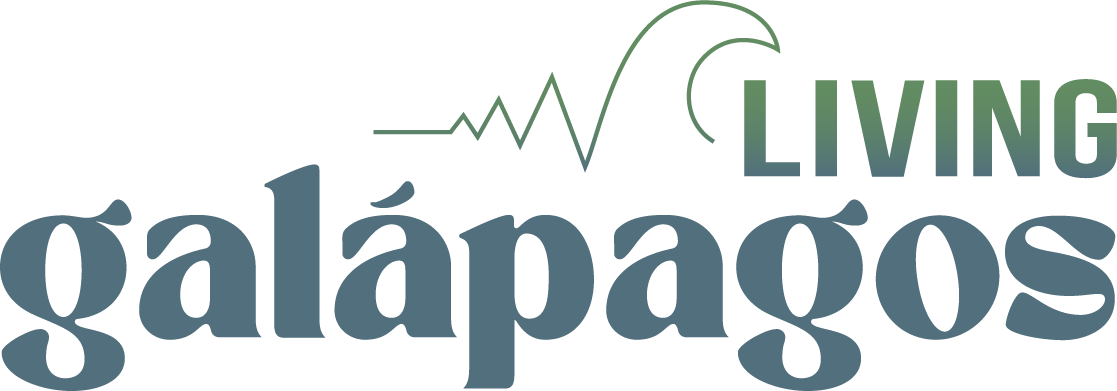At What Cost
On an island that depends on tourism, many natural wonders remain difficult for locals to reach. Meet some of the people trying to change that.
At What Cost
At What Cost
On an island that depends on tourism, many natural wonders remain difficult for locals to reach. Meet some of the people trying to change that.
REPORTER
Elizabeth Moore
PHOTO
Lauren Cmiel
VIDEO
Chris Ocana
Lucas Pruitt
INTERACTIVE
Brook Buchanan
Yufei Dong
Carlos Quimi Paladines finishes untangling surfboard leashes out back and heads into his shop to change a tire’s inner tube. A woman with an American accent comes in to rent snorkel gear. A Ukrainian couple hovers by the bikes lined up on the sidewalk and asks about rates.
The 33-year-old owner of Cañón Point chats with the customers amiably, but not for too long. It’s almost 10 a.m., and kids are arriving for surf camp. His part-time teenage employee didn’t come to work today, so he will lock the black iron gates outside his shop while he and the campers head to the beach.
Ten years ago Quimi Paladines, or “Cirro” as he’s known around the island, opened Cañón Point on the waterfront thoroughfare of San Cristóbal to serve both tourists and locals. He offers excursions and gear rentals for surfboarding, skateboarding, snorkeling and biking.
But for local kids, the shop means more. It’s the home base of a community-driven mission to teach a love of sports and their island.
During the school system’s annual two-week summer break in March, Quimi Paladines hosts a camp, as he has for the past eight years. Some kids are from the island, and some are vacationing from mainland Ecuador. In the morning, they surf at Punta Carola. In the afternoon, they skate at Cancha Alegría.
REPORTER Elizabeth Moore
PHOTO Lauren Cmiel
VIDEO Chris Ocana | Lucas Pruitt
INTERACTIVE Brook Buchanan | Yufei Dong
Carlos Quimi Paladines finishes untangling surfboard leashes out back and heads into his shop to change a tire’s inner tube. A woman with an American accent comes in to rent snorkel gear. A Ukrainian couple hovers by the bikes lined up on the sidewalk and asks about rates.
The 33-year-old owner of Cañón Point chats with the customers amiably, but not for too long. It’s almost 10 a.m., and kids are arriving for surf camp. His part-time teenage employee didn’t come to work today, so he will lock the black iron gates outside his shop while he and the campers head to the beach.
Ten years ago Quimi Paladines, or “Cirro” as he’s known around the island, opened Cañón Point on the waterfront thoroughfare of San Cristóbal to serve both tourists and locals. He offers excursions and gear rentals for surfboarding, skateboarding, snorkeling and biking.
But for local kids, the shop means more. It’s the home base of a community-driven mission to teach a love of sports and their island.
During the school system’s annual two-week summer break in March, Quimi Paladines hosts a camp, as he has for the past eight years. Some kids are from the island, and some are vacationing from mainland Ecuador. In the morning, they surf at Punta Carola. In the afternoon, they skate at Cancha Alegría.
The rest of the year, Quimi Paladines runs El Club de Cañón for kids aged 8 and up. He takes a group of about seven to skate on Wednesday afternoons and to surf on Saturdays, for $5 an outing. The club was one of the first of its kind on the island, which now has multiple like it.
Through his programming for the kids, Quimi Paladines teaches them about respect — for each other, for family and for the environment. He gives kids a productive way to spend their time and a way to get to know their own island.
But it’s a delicate balance. When Quimi Paladines closes the shop to take out the kids, he knows that he’s missing out on potential tourist sales. The price he charges kids doesn’t fully cover the activities. Because the club isn’t a school or nonprofit venture, he doesn’t get government funding.
“We need all these tourists,” he said, “so that we can develop all of these plans for the community.”
“Galápagos is made for everyone. We’re not made just for the tourists. We’re also made for the community of the very population.”
But tourism can come at a cost. Some locals feel like the island now exists primarily for tourists, as many aren’t familiar with the sites tourists come to see, like the mountainous highlands or rock island formations popular with divers and snorkelers.
In 2019, the Galápagos welcomed 271,000 visitors. In 2020, when COVID-19 halted foreign visitors, tourism plummeted by 96%. And the islands depend on tourism — it makes up 85% of the economy.
Quimi Paladines said that in general, people who don’t work in the tourism industry don’t experience the island. He and other leaders — across politics, business and community — are working to change that.
“Galápagos is made for everyone,” he said. “We’re not made just for the tourists. We’re also made for the community of this very population.”
You Can’t Love What You Don’t Know
Cañón Point is situated on a waterfront street lined with souvenir shops peddling “I Love Boobies” T-shirts (a riff on the famous bird) and restaurants serving overpriced sushi.
Branching off to a side street, 70-year-old Mariana Barrera Barrera sits outside the convenience store she owns. Peacefulness is what attracted her to the island in the first place, 38 years ago, where she gave birth to her daughter. She came from Cuenca, in the mountains of Ecuador, when she was having problems with her first marriage.

She said she doesn’t know the island very well, because she doesn’t like to go out. She doesn’t like the beach, because she doesn’t know how to swim.
She’s lived through a lot of tourists littering, adding to the problem the island faces with plastic pollution. She knows something can be done about it.
“Of course I can see solutions,” she said. “Educate people.”
That’s what Fabricio Chauca hopes to do with his conservation-focused tour company Eco-Challenger Galápagos.
Chauca, CEO and head of guides, opened the San Cristóbal shop in August 2019. He is also president of the San Cristóbal Society of Tourist Guides.
On his tours, Chauca invites tourists to join him for a brief beach cleanup in an effort to leave the place better than they found it. He does it at the end, after they have seen sea turtles, sharks and other wildlife, hoping that their newfound appreciation of nature will spark conservation efforts.
He also tries to involve locals in his tours. When COVID paused the flow of tourists, Chauca created a discount tour that included Kicker Rock. This rock formation sits 10 and a half miles away from the downtown port, up to two hours by boat, and is popular among tourists for offering glimpses of iconic Galápagos wildlife like sea turtles and blue-footed boobies.
Chauca said it’s important that residents visit these difficult to reach places, not only the most accessible beaches on the island.
“Many local people don’t know about Kicker Rock,” he said. “So how can you understand why we need to conserve the Galápagos if you are just focusing on your work and maybe just Playa Mann and Lobería and Punta Carola, and you don’t know the rest of the nice and beautiful places around?”
Chauca plans to pilot a new program in a few months that would offer free tours to locals, funded by setting aside a small portion of each tourist tour.
Chauca’s and other tour leaders’ tours go through protected areas, meaning the Ecuadorian government has total control over the sites. The Galápagos National Park encompasses 97% of the islands’ terrestrial area and was created in 1959 to protect the islands’ flora and fauna. The surrounding marine environments are protected by the Marine Reserve.
Every visitor to the islands must pay an entry tax, which ranges depending on age and nationality. Adult foreign tourists must pay $100, and kids of the same classification pay $50. Adult residents of Ecuador pay $6, while kids cost $3.
How many of the 21 islands in the Galápagos Archipelago are inhabited?
4 islands
Santa Cruz is the most inhabited with roughly 12,000 people, followed by San Cristóbal, Isabela, and Floreana.
Where are most of the visitors to the Galápagos Islands from?
Ecuador
Around 82 thousand visitors per year are Ecuadorian, followed by 34 thousand from the United States, and 3 thousand from France.
How much is the entrance fee to visit the Galápagos National Park?
$100 per adult
$50 per child
The is a one-time fee which lasts for 60 days. The money is used to improve sustainability, tourist experiences, and conservation management.
What percentage of the islands are considered to be National Park?
97%
Virtually all of the land surface of the Galápagos Islands are considered to be protected National Park territory. The other 3% is used for living purposes.
Chauca doesn’t see that money being put to use in a way that benefits people on the island.
“Galapagos provides a lot of money to Ecuadorians, because a lot of people come and pay $100,” Chauca said. “But we don’t feel that that $100 comes back here.”
The National Park website says the tax was put in place with the goal of funding conservation efforts and managing the National Park protected areas. It says the money is distributed among various local entities for its allocation to sustainable human development.
Gianni Arismendy Guerrero, a San Cristóbal town council member since 2019 who serves on the environmental and public works commission, said the fee has had different applications throughout the years.
He said under former Ecuador President Rafael Correa, the entirety of the fee was distributed among island municipalities for community use. Since Correa’s presidency has ended, Arismendy Guerrero said all the money goes through the Ecuador Central Bank, which distributes it as it sees fit not only to the Galápagos, but also to other parts of the country.
Over the years there have been proposals to double the amount, but it’s never happened.
Arismendy Guerrero has worked in environmental education and protection for three decades. A former park ranger, he now helps raise the next generation as environmentally conscious through the youth ecological club Mi Pequeño Guardaparque, or “My Little Park Ranger.”
“If there’s no tourism, where is the commerce? If there is commerce but not tourists, how can we keep developing? So there has to be a balance. The tourist has to be reciprocal, to contribute to the development of the island. And us, to act in a way that satisfies the tourist.”
Mi Pequeño Guardaparque involves public employees of the National Park to develop environmental activities for kids, like beach cleanups and microplastic monitoring. Arismendy Guerrero said the goal is to educate kids in order to change their behavior into one of love, respect and value for their natural surroundings.
“If you’re not familiar with the places, what can we expect?” he said.
His educational mission doesn’t end with the kids. The island’s history and wildlife center, which last year saw 29,000 visitors as the second most visited site on the island, is named after him: the Gianni Arismendy Interpretation Center.
Arismendy Guerrero also works to position San Cristóbal as a tourist destination, in part by involving it in more town-level and international festivals. Often, tourists visit the island only briefly as part of a cruise and don’t contribute much to the economy.
However, some residents feel the government already cares more about the tourist economy than local needs. Arismendy Guerrero says the island must strike a balance between prioritizing tourists and locals.
“If there’s no tourism, where is the commerce? If there is commerce but not tourists, how can we keep developing?” he said. “So there has to be a balance. The tourist has to be reciprocal, to contribute to the development of the island. And us, to act in a way that satisfies the tourist.”
The tension between tourism and conservation is also something Eduardo Veliz, another resident, has felt.
The 68-year-old, who’s lived on the island for 53 years, became passionate about island conservation through his former work as a research assistant. Over the past three decades he’s built and managed two hotels. Today he runs the Royal Galápagos Inn.
As someone who works in the tourism industry, he doesn’t think enough is being done to mitigate its environmental impact.
“The environment is tired,” he said, “It’s exhausted.”
Veliz said the island population welcomes tourists, because they bring money. But he suggested the government do something different in how they administer the visits.
“We should have the number of tourists limited per year,” Veliz said. “And I also think we should have a period in which we shouldn’t have tourists, like some months a year.”
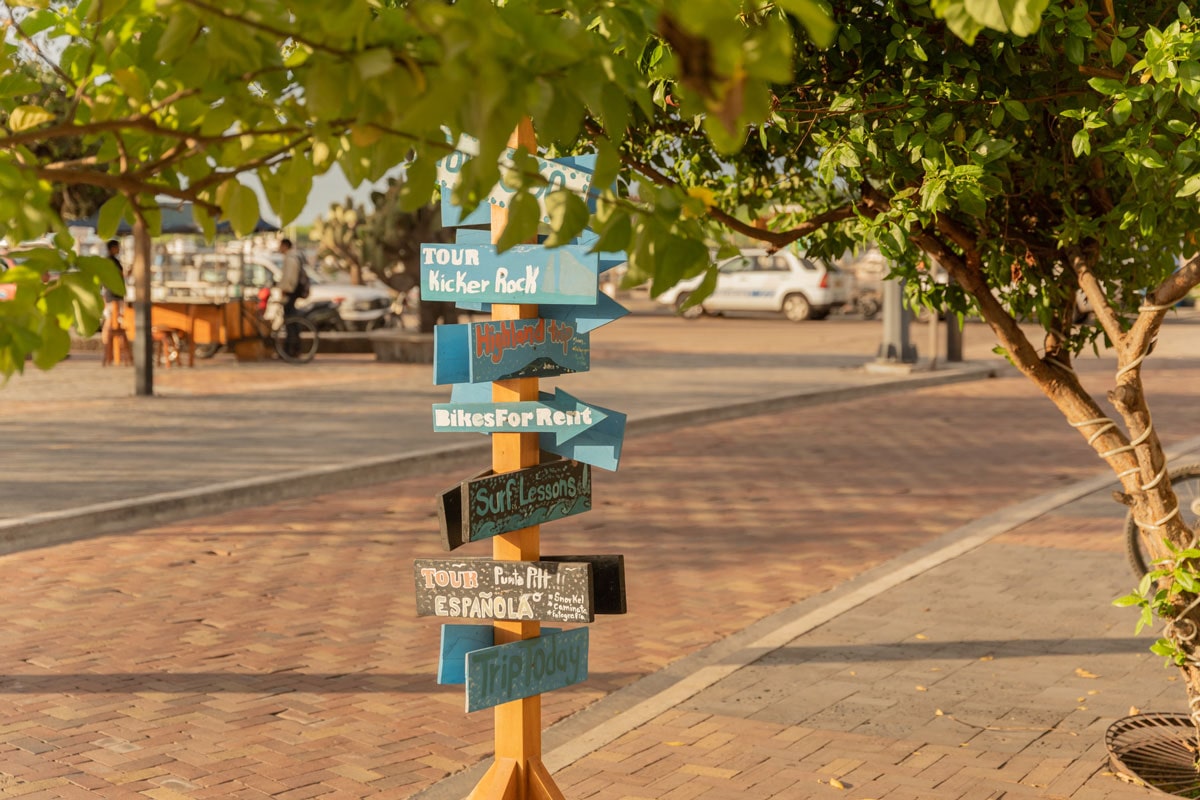
The tension between tourism and conservation is also something Eduardo Veliz, another resident, has felt.
The 68-year-old, who’s lived on the island for 53 years, became passionate about island conservation through his former work as a research assistant. Over the past three decades he’s built and managed two hotels. Today he runs the Royal Galápagos Inn.
As someone who works in the tourism industry, he doesn’t think enough is being done to mitigate its environmental impact.
“The environment is tired,” he said, “It’s exhausted.”
Veliz said the island population welcomes tourists, because they bring money. But he suggested the government do something different in how they administer the visits.
“We should have the number of tourists limited per year,” Veliz said. “And I also think we should have a period in which we shouldn’t have tourists, like some months a year.”
A Man Without Time
Renowned as one of the most preserved environments left in the world, the Galápagos has been met by a flood of tourists eager to see the natural beauty. In his teenage years, Eduardo Veliz left his home in mainland Ecuador when offered a job as a research assistant in the Galápagos. Falling in love with the natural world, he made the Galápagos his home, and opened the Royal Galápagos Inn, a hotel designed around the natural ecosystem so tourists might feel the same.
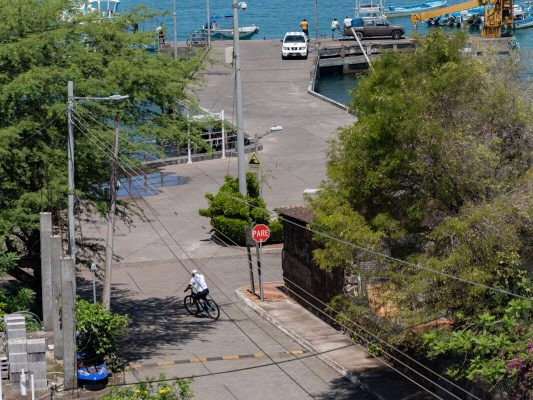
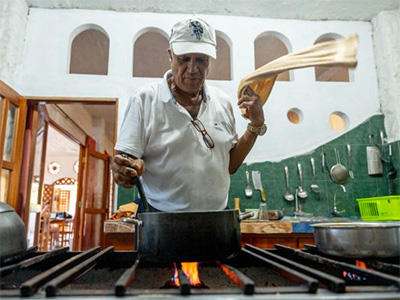
Striking A Balance
Whether a balance is struck in tourism administration, foreigners and islanders seem to coexist.
“If we look all over the waterfront, the majority of the businesses are for tourists, but they’re also for locals,” said Joselyn Medina.
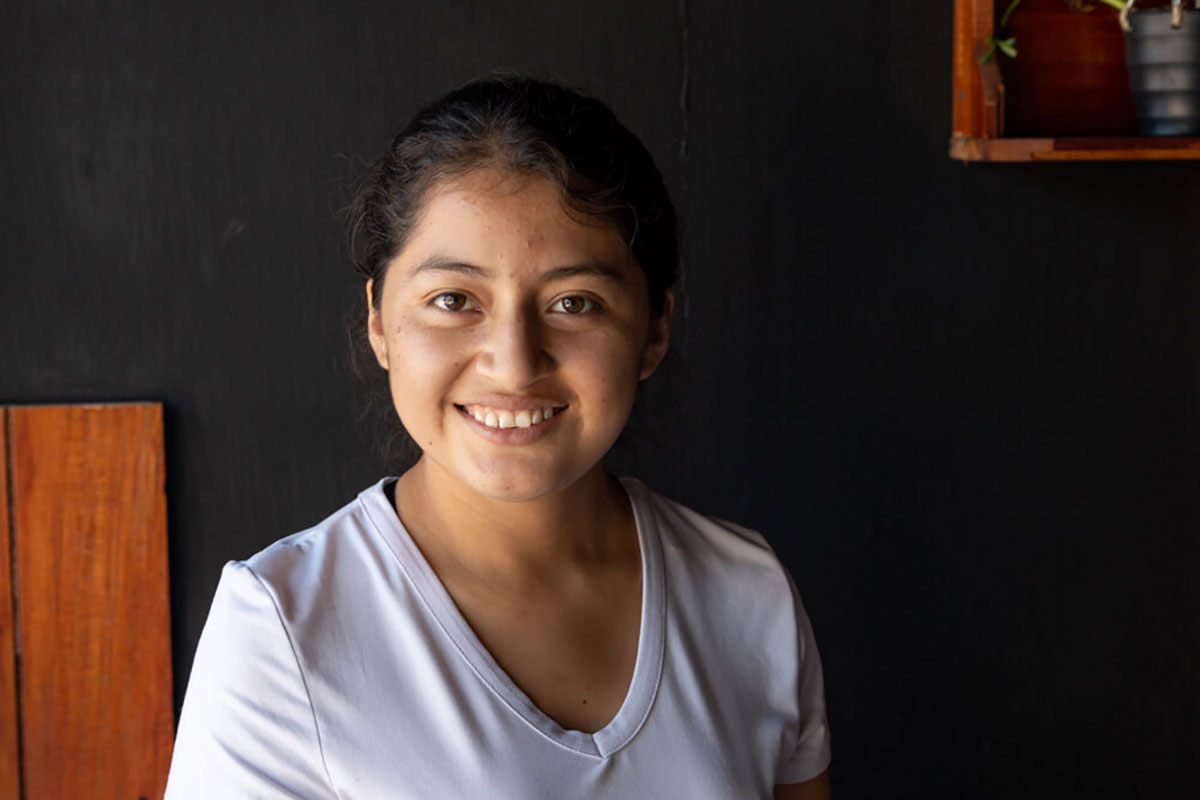
Medina, 19, is a barista at Ranti Kamak coffee shop. The organic coffee roastery and cafe owner Markus Medina, (who is related by marriage and happens to have the same last name), taught her everything about the coffee production process.
Joselyn Medina came to San Cristóbal when her mother took a new job on the island in December 2018. Medina finished high school on the island and plans to go back to the mainland for college.
She knows an older fisherman who has never been to the highlands and does not have any interest in going.
“There are a lot of older people who have not gone out, nor do they want to,” she said, “or rather, some say that they don’t like the idea.”
“There’s nothing that identifies Galapagos like it’s pure Galapagos. We’re thinking we would like coffee to be like that. What is something that’s unique to the islands? Coffee. Because It grows here, it’s unique, the flavor is different, it gives identity. People start to feel proud of it.”
Markus Medina opened the downtown cafe with the goal of changing the way people experience coffee. They serve pour-overs and a selection of espresso-based drinks, without added flavors or a food menu, so the focus remains on the coffee.
Medina also works as a tour guide. He turned his coffee hobby into a business during COVID, when tourism halted.
The Galapagos produces coffee that’s highly sought after around the world, because of its unique growing climate. Medina calls his coffee “the flavor of the islands.”
Medina wants to change some of the bad practices in the industry by paying farmers more and ensuring locals enjoy what the island has to offer. He said the norm is for the best coffee to be exported and the worst to stay in the country.
His coffee business serves about 80% tourists and 20% residents. Medina works with about 20 tourists per month for his guide job. When cruise ships dock in town, he leads them through a 30-minute “Galápagos in a cup” tour in the shop.
Medina said about once a month one of the locals, many of whom drink instant coffee, comes in and learns that coffee is grown in the highlands, just a 30-minute bus ride away.
He said it makes him a bit sad that residents don’t know much about their own island, but mainly he sees a big opportunity.
“There’s nothing that identifies Galapagos like it’s pure Galapagos,” he said. “We’re thinking we would like coffee to be like that. What is something that’s unique to the islands? Coffee. Because it grows here, it’s unique, the flavor is different, it gives identity. People start to feel proud of it.”

